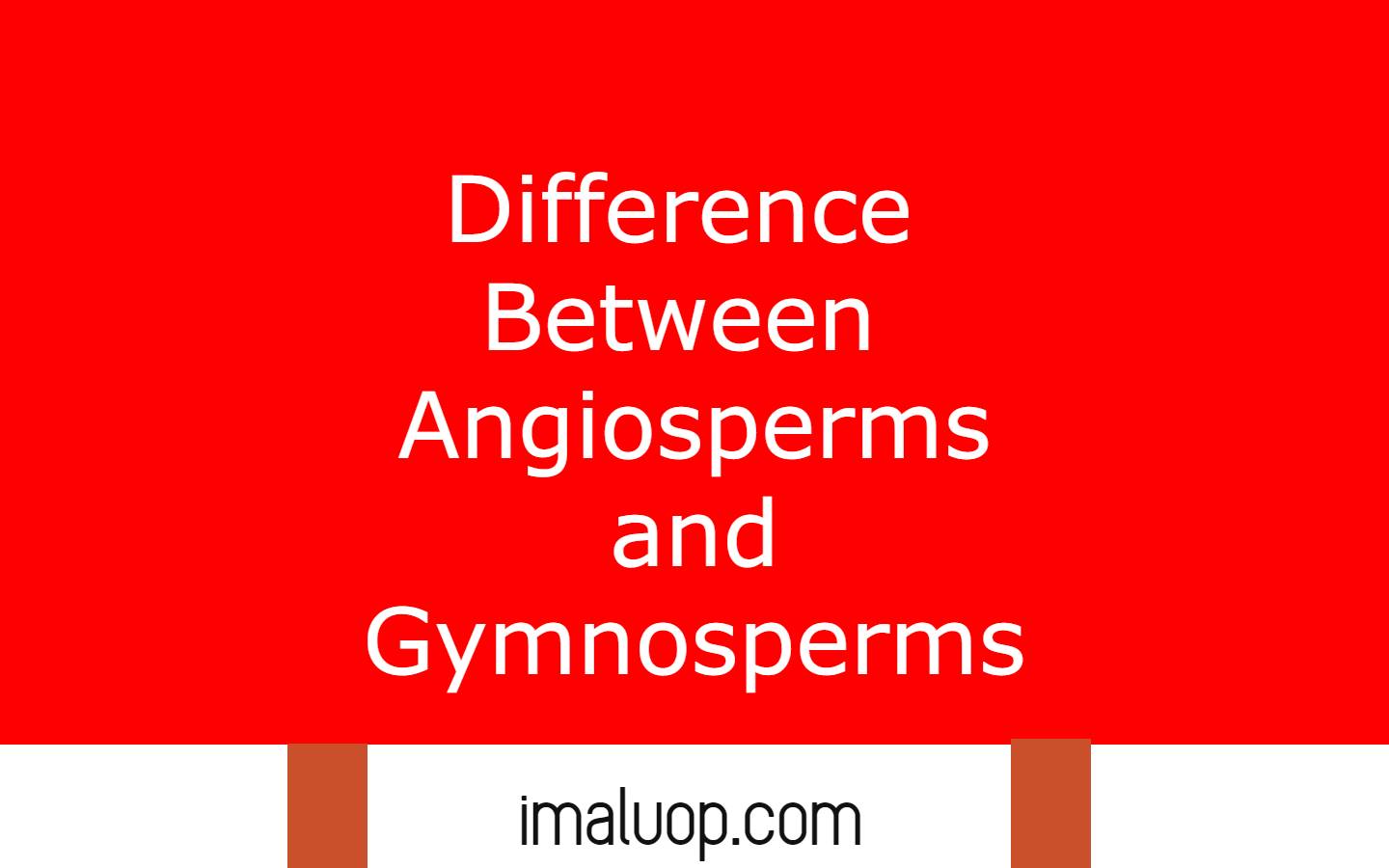Hi, we are going to discuss major differences between angiosperms and gymnosperms which will help to understand their characters more clearly. But I will suggest to study definition and examples of angiosperms, definition and examples of gymnosperms with their characteristics before reading about the differences between angiosperms and gymnosperms.
Major Differences Between Angiosperms and Gymnosperms:
| Angiosperms | Gymnosperms |
| Angiosperms are a group of flowering plants in the plant kingdom which shows very much diversity and more than 80% plants in present day are belong to angiosperms. | Gymnosperms are a group of vascular plants which show a special character in their seed because their seeds are exposed or naked and not visible until they reach maturity. |
| Their seed is not visible from outside because their seed is covered by the wall of ovary which forms fruits after fertilization. | Seed in gymnosperms is naked because they are not covered by the wall of fruits and their seed is present in the form of cones. |
| Angiosperms are flower producing plants that attract insects and other animals for pollination by their colorful attractive flowers which makes them famous as flowering plants. | Gymnosperms are non flowering plants but sometimes their cones look like flowers. |
| In angiosperms most of the flowers have both male reproductive part and female reproductive part together but in very few cases male and female reproductive parts are present in separate flowers in male flower and female flowers. | In gymnosperms generally male and female reproductive organs develop separately but in some cases male and female reproductive organs present together. |
| In angiosperms a major portion of stem is composed of hardwood. | In gymnosperms a major portion of the stem processes softwood. |
| In most cases leaves in angiosperms are broad sized and flat shaped but variation also occurs in some special cases. | In gymnosperms leaves are generally scale-like or needle-like pointed especially in cold areas where throughout the year covered by snow pointed needle shaped leaves give protection against damage by snow fall. |
| Xylem present as vascular tissue in both angiosperms and gymnosperms but angiosperms xylem have vessels. | Vascular tissue present in gymnosperms like angiosperms but major difference is gymnosperms do not process xylem vessels. |
| Accessory floral part sepals and petals present and sporophyll have stout thalamus, stigma and style present in female reproductive organs carpels. | Accessory floral parts in gymnosperms are absent and woody female reproductive organs do not have style and stigma, sporophyll have elongated axis. |
| Microsporophyll is present in the form of stamens which is clearly divided into two parts and anthers the filament and in most of the cases there are four pollen sacs or microsporangia. | Microsporophyll do not have any clear structure like anthers and filaments, number of microsporangia range from two to hundreds which have similar functions as pollen sac. |
| In angiosperms stalked ovules are attached to placenta inside ovary and ovules are surrounded by two thin layers of micropyle. | In gymnosperms sessile stalkless ovules are present in ovaries at the base of megasporophylls and ovules are surrounded by three layers of micropyle. |
| Male gametes do not have flagella and they do not move automatically; they need external agents to move them upto female gametes for fertilization. | Male gametes have flagella which enables them to reach female gametes but they need a water layer to swim easily to reach female gametes for fertilization. |
| Embryo sac in angiosperms is seven celled and eight nucleated but they do not have archegonia. | Embryo sac in gymnosperms is parenchymatous and large, they have clear distinguishable archegonia. |
| Seed in angiosperms may be with one cotyledon or two cotyledons with triploid endosperm which is a special feature of angiosperms. | Embryo in gymnosperms may have two cotyledons or sometimes have multiple cotyledons and their endosperm is diploid in nature. |
| In angiosperms double fertilization is a unique event during fertilization in which two male gametes take part in fertilization where one male gamete performs vegetative fertilization and another male gamete performs generative fertilization. | Double fertilization is absent in gymnosperms here only one male gamete is functional which causes fertilization. |

Reference: Differences Between Angiosperms and Gymnosperms
Hi Everyone!!! Welcome to Imaluop. Imaluop always try to learn some new and he want to share to other people. Here we will try to learn various topics on Science, specially on Biological Sciences.
